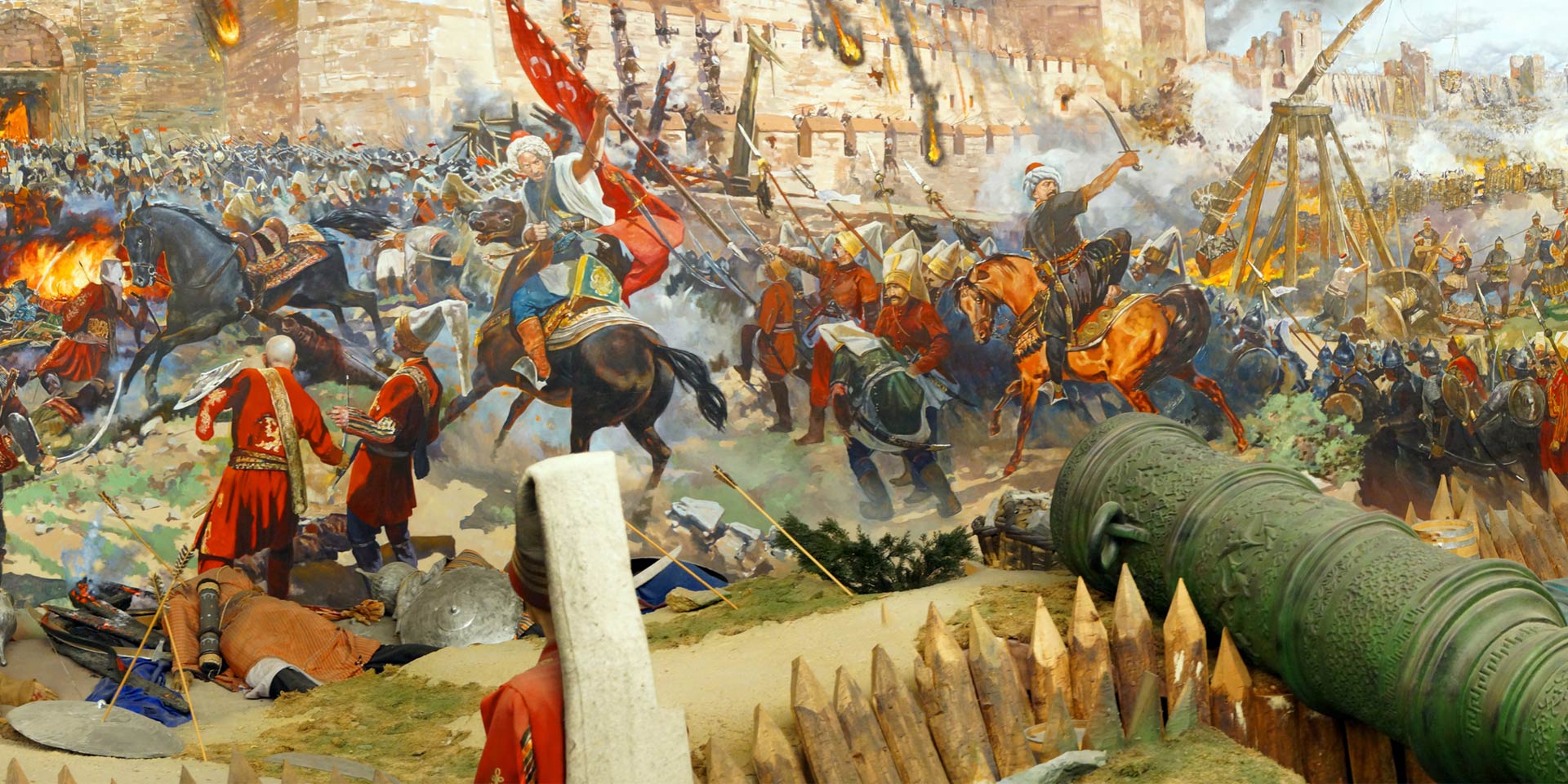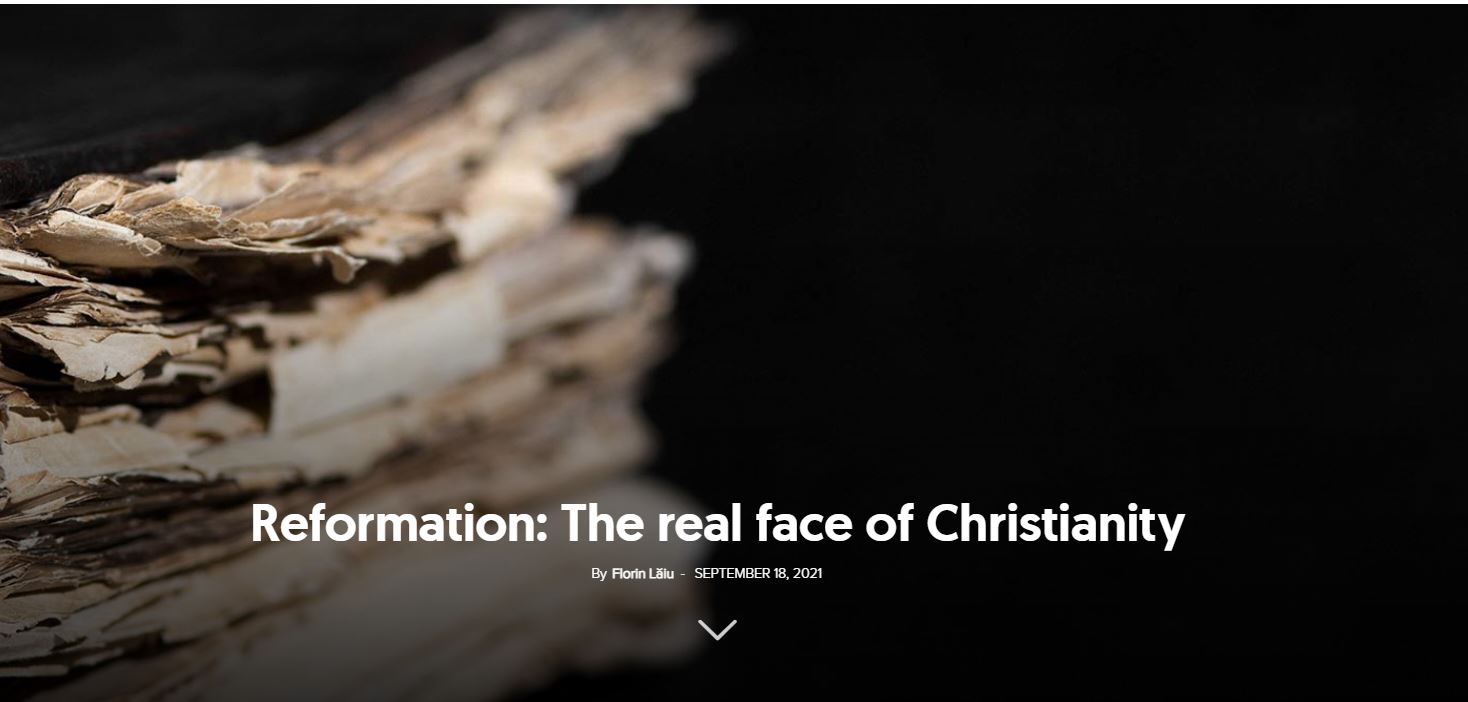At the beginning of the 15th century, the threat of the Ottoman Empire to Eastern Europe was a painful certainty. The last Byzantines, aware of the ensuing disaster, called on Western aid, seeking political union with the Roman Catholic Church.
The talks took place in 1439, in Florence, and resulted in a questionable agreement, which displeased both parties. The Orthodox accepted a papal primacy of honour, not a real one,[1] but enough to regain papal prestige in the eyes of the Westerners. Unintentionally, the Orthodox East prevented the reformation of the papacy initiated by the Catholic episcopate in Konstanz (1414-1418) and Basel (1431-1437).
In 1453, Constantinople was conquered by the Turks. The event was devastating for the population inside the city walls. The fall of the metropolis brought so much suffering that the only possible explanation was, apparently, an apocalyptic one: it was the time of the final tribulation and Christ would return 7000 years after the creation of the world, that is in 1492. In this context, in 1483, the Orthodox Church unilaterally annulled the agreement of union with the Roman Catholic Church. The Orthodox Church endeavoured not to be considered traitors to the true faith by Christ the deliverer.[2]
The anti-Catholicism of the Easterners, fuelled by the cultural and political conflict between Rome and Constantinople, the reproach of the consistent lack of intervention for the salvation of the Byzantine capital, and the subsequent Catholic expansion, remained a constant for the Orthodox spirit. The Protestant Reformation found in this resentment a starting point for missionary work in the East.
Luther and the other reformers created another polarization of Christianity, this time inside the Western world. Religious misunderstandings between Protestants and Catholics also affected the Orthodox Church. Istanbul (old Constantinople) became the scene of a real “religious cold war”[3] between the embassies of the Catholic states and the Protestant (Calvinist) embassies.
The Roman Catholic attack
Although the Orthodox Church categorically rejected the Council of Florence Decree of Union, in 1521 the Latins made the documents of the event public, intending to reaffirm the universality of the papal primacy, which the Orthodox Church had initially recognized. Therefore, according to Roman Catholic reasoning, the Protestant criticism of the authority of Rome is unjustified.[4]
In the 16th century, the confessional map of Western Europe underwent major changes, with Catholicism losing the northern part of the continent. Rome’s reaction was violent: excommunications, persecution, executions, religious wars, and strong missionary actions.
In 1540 the Jesuit order was established. It massively contributed to the return of some regions to papal obedience and the conquest of other territories in the East and the New World. All this was achieved through rigorous discipline, quasi-military organization, and quality education offered to future Catholic missionaries.
In the Orthodox East, the Jesuits adapted to local conditions, using, without scruples, political, social, cultural, financial, and ecclesiastical opportunities, and managed to reap substantial missionary success. A hybrid form of church organization was developed: the Uniate, or Greek Catholicism, responsive to the identity-related sensitivities of the target populations. Greek Catholicism imposed itself on some of the Belarusians, Ukrainians, and Ruthenians at the Brest-Litovsk Synod in 1596, and on a part of the Transylvanian Romanians in 1701. Because there was no direct political support from a Catholic state (Poland or the Habsburg Empire), the Uniate imposed itself to a lesser extent on other Balkan peoples.
The light from the West
According to Daniel Benga,[5] Lutherans came into contact with Orthodoxy because they were convinced that God had mandated them to spread the true gospel beyond their borders. Melanchthon and Primus Truber believed that the eschatological events were near: the antichrist was already embodied by the pope and, externally, by the Ottoman Empire. Lastly, Lutherans sought to justify their doctrines and authority by resorting to Orthodoxy as a possible doctrinal ally against Roman Catholicism. In 1544, Melanchthon printed the Lutheran Catechism in Greek and sent it to the Patriarch of Constantinople, and in 1550 the Lutheran Catechism appeared at Tübingen translated in Slavonic, “for the conversion of the Illyrian nations”.[6] This is how great the Lutheran missionary zeal for Orthodoxy was!
In 1559, Jehoshaphat II, the patriarch of Constantinople, became interested in Luther’s reformation due to its penetration into Transylvania and sent Deacon Dimitrie Mysos to Wittenberg to learn about these new religious ideas. Melanchthon offered him the work Confessio Augustana, in Latin, accompanied by a letter asking the patriarch not to believe the slanders spread by Catholics about Lutherans and to pronounce objectively on the new religious ideas. The reformer’s letter was permeated with the conviction that the Saviour’s return was imminent, for which urgent action was required.
During this period, the Protestants became increasingly interested in the Orthodox world. David Chytraeus, a friend of Melanchthon, admired Vienna for the old Orthodox liturgical ordinances and the freedom of the Easterners to celebrate the Eucharist not only with bread, as the Catholic hierarchy had restricted, but with both elements of the Communion. He appreciated the fact that Orthodox priests could marry, the rejection of the papal primacy, and even though he considered the worship of saints and icons to be superstition, he saw interfaith dialogue as possible. Wanting to know more, Chytraeus travelled to the Ottoman Empire, leaving us sad testimonies about the Greek Orthodox Church, which Muslim fanaticism had brought to a deplorable state.[7]
He also noticed that churches and schools were insufficient and subject to heavy taxes. The picture is completed by another Protestant traveller and diplomat, Vaclav Budovec, who deplored the dependence of the patriarchs on the Turks and the non-fulfilment of their spiritual duties: “They do not have time for science, they copy the books, they do not preach, there are almost no schools.”
Exhausted by the battles against the papacy, the Greeks were like the Jews under the Pharaohs, “needing repentance to be corrected”. Evidently, Budovec refers to the stubbornness of the Greeks to maintain a cultural-religious identity for which their leaders neglected their spiritual duties. More or less, from this point on, all the other Protestant missionaries would leave to spread “the saving lights lit by God in the West”in the East.[8]
In 1572, the theologians of Tübingen, Martin Crusius and James Andreae, with the help of the German embassy in the capital of the Ottoman Empire, resumed dialogue with the Patriarchate of Constantinople. They claimed that the Lutheran Church was not heretical, but a true church, so they demanded ecclesiastical communion between Lutheran and Orthodox. After receiving the Confessio Augustana translated into Greek, Patriarch Jeremiah II responded to each of Melanchthon’s ideas.
He opposed the Protestant doctrines of Sola Fide, the invisible church, and the preservation of the Catholic doctrine of the co-occurrence of the Spirit from the Father and from the Son (Filioque), but defended the Orthodox traditions about the number of mysteries and their importance, the need for holidays, saints and icons. The discussion continued until 1581 when Jeremiah II forced Lutherans to admit Orthodox truths as a condition without which dialogue could not progress.
Despite Lutheran discretion, Patriarch Jeremiah II’s answers became known in Poland, where the Jesuits published them several times to stop the Protestant mission.[9]
The “Calvinist” Patriarch
In the seventeenth century, a new attempt at rapprochement was made by the Calvinists, through their relationship with Cyril Lucaris, patriarch of Alexandria until 1620, and then patriarch of Constantinople from 1621 to 1638.
Cyril studied in Venice, Padua, Wittenberg and Geneva and was familiar with the Reformation. The experience in Lithuania, where he protested against the union of Orthodox Ruthenians with Rome, further strengthened his anti-Catholic sentiments. As patriarch, he intended to reform the church according to Calvinist principles. To this end, he sent many young Greek theologians to study at universities in Switzerland, the North of the Netherlands, and England, and corresponded consistently with eminent figures in the Reformed world.
A special relationship was forged between him and the Archbishop of Canterbury, George Abbot. The two prelates were motivated by their common anti-Catholic interests and it seems that they considered a church reunited, at least in terms of strategy, against Rome.
In 1627, Cyril Lucaris reopened the dying Academy in Constantinople and equipped it with a printing press, in the desire to enlighten the Orthodox Church. Although the Catholic missionaries instigated the destruction of this printing house, the patriarch still managed to publish a translation of the New Testament into modern Greek (an act specific to the Reformers).
In 1629, a Confession of Faith written by Lucaris appeared in Geneva and it exposed the Calvinist doctrines in the name of the whole Orthodox Church. He never publicly acknowledged nor denied[10] the work, which was condemned by the Orthodoxy in 1638, 1641, 1672 and 1691. In opposition to the book attributed to Cyril Lucaris, the Orthodox Church approved the Confessions of Faith of Peter Mogila, Metropolitan of Kyiv, and Dositei, Patriarch of Jerusalem. Peter Mogila’s work has obvious Catholic influences, even after the correction of Meletie Syrigul,[11] an edifying fact for the depth of the seventeenth-century Catholic propaganda in the Orthodox space.
Cyril Lucaris’s “Calvinism” was, however, refuted by the dialogue with the Transylvanian prince Gabriel Bethlen, who asked for his consent for the conversion to Calvinism of the Orthodox bishop Ghenadie II (1627-1639) and the Transylvanian Romanians. The negotiations did not lead to any results, because the patriarch could not consent to such a thing. He appreciated the positive aspects of the Reformation but remained consistent in his alignment with the doctrines of his church.
The patriarchate of Cyril Lucaris in Constantinople experienced five interruptions, his position being restored each time due to the interventions of the Netherlands and England. In 1638, the patriarch’s activity ended tragically, after the Jesuits spent a fortune to discredit him before the Turkish authorities and managed to provoke a huge wave of opposition against him in his own church. The victory of the Jesuits over Lucaris brought Orthodoxy closer to Roman Catholicism in the seventeenth century, an action encouraged by the investments of the French monarchy.
At the end of history
In the East, Protestantism could not find the conditions that drove Luther’s Reformation: Orthodox leaders were far from the Catholic luxury; social evolution and the emergence of the prosperous and autonomous middle class were delayed; the cultural level of the vast majority remained low; and meditation on the means of salvation was strictly an ecclesiastical concern.
After the 1439 Decree of Union in Florence, Catholic propaganda no longer addressed the Orthodox with doctrinal arguments, but with promises to improve social status. In most cases, these promises were without substance, but later provided an argument for the struggle for social and national emancipation of the Greek Catholics. Both Protestants (Calvinists) and Catholics resorted to violence when the secular arm was on their side, which may seem grave today, but it was allowed at the time. Perhaps the best example is the situation in Transylvania, where, in the 16th century, the Orthodox were forced to accept Calvinism, and in the next century they suffered Catholic coercion.
The Eastern Church has struggled over time to preserve its identity and has survived, despite serious political problems and religious competition, even though it has failed to reach the creative capacity it had before the Ottoman rule. Over the centuries, Orthodoxy has imposed resistant immobility, both to internal reforms (iconoclasm, criticism of Simeon the New Theologian), and to any novelty proposed from the outside.
At the end of history, questions may arise for all Christians (Matthew 25:14-30). Let’s keep the ones reserved for the present and the future. Are we really okay? Do we accept that, in fact, Christianity, being of Christ, needs His vision? What stands in the way of an awareness of the need for reform, and its implementation?




















